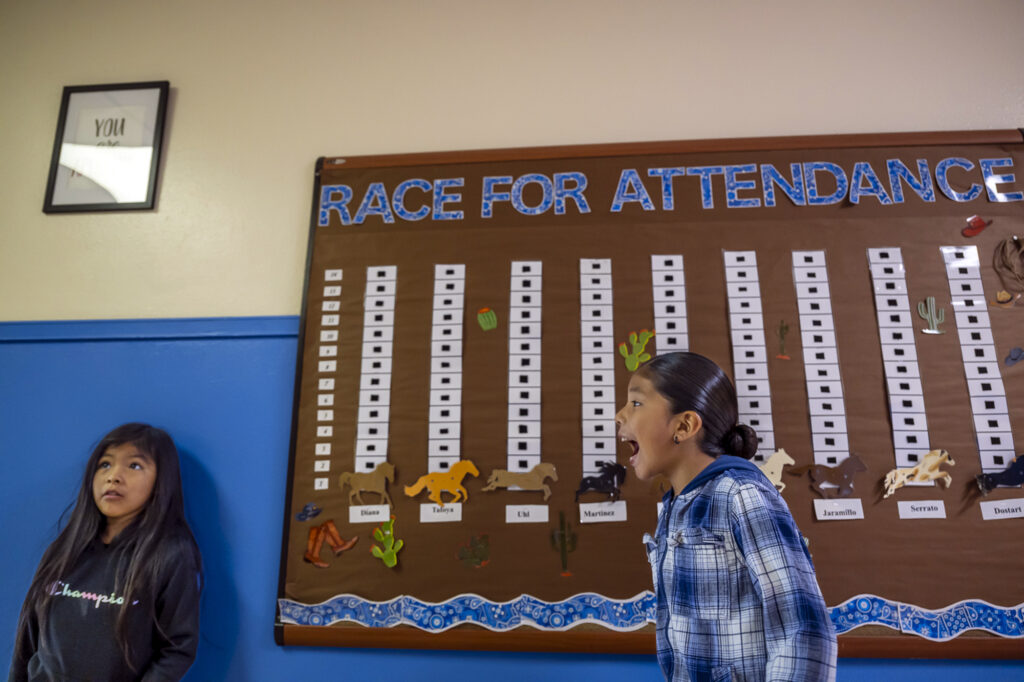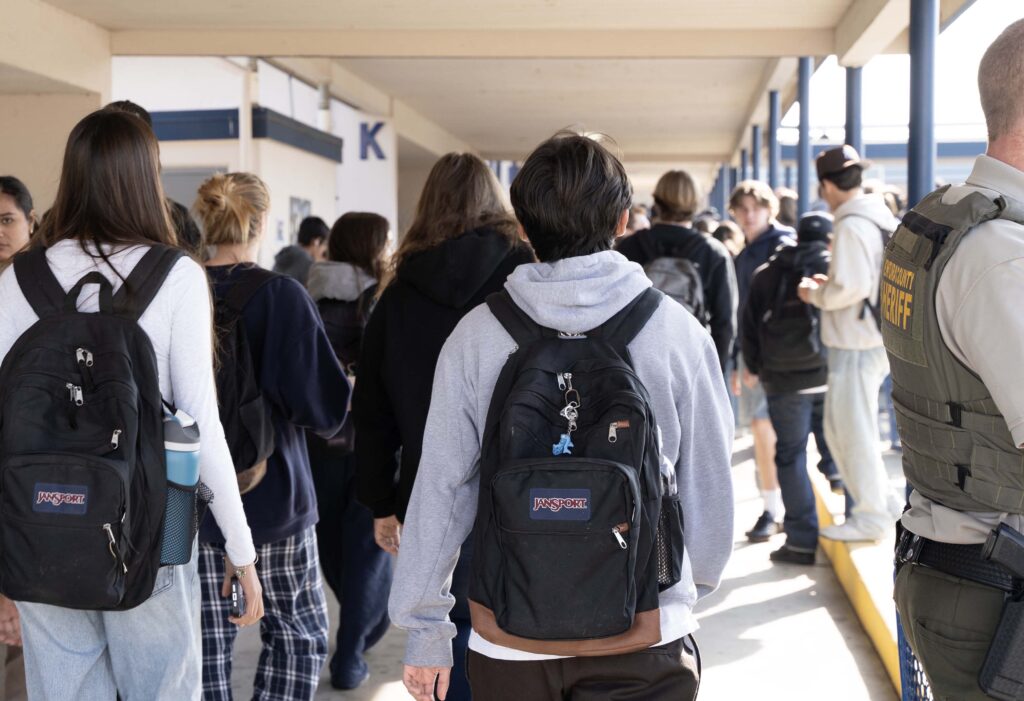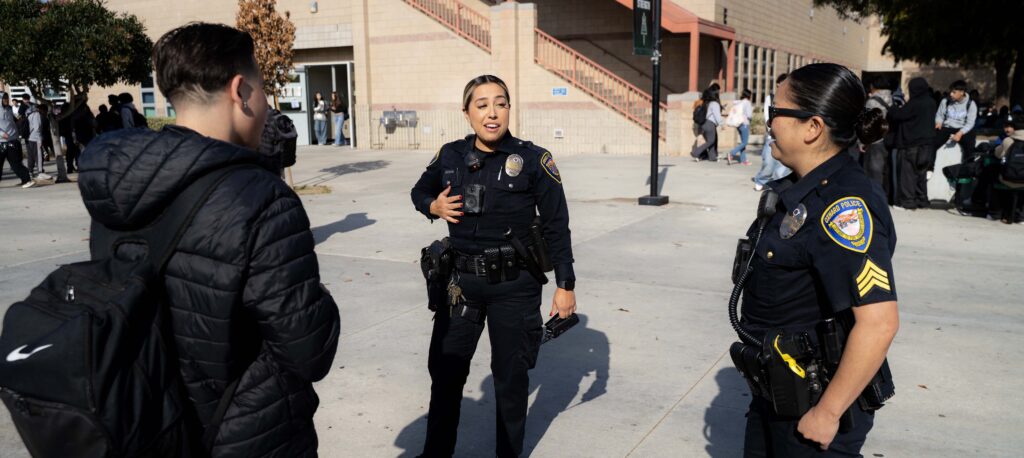
Cindy Crisanto, an ironworker apprentice, says the child care benefit is “a lifesaver” that allows her to pursue a career in construction. She is one of the few women ironworkers on the construction site at the Lucas Museum of Narrative Art in Los Angeles.
Credit: Courtesy of Cindy Crisanto
After bouncing around in several job paths, including retail sales, office receptionist and warehouse worker, Cindy Crisanto has begun a potentially lucrative career as a welder and ironworker — a field with very few women.
She made that switch with the aid of a new state apprenticeship program that provides child care funds during her on-the-job training, helping her to overcome an obstacle many women face in trying to enter the construction trades while also raising a family.
Crisanto — a single mother of two elementary school-aged boys — is receiving about $800 a month in state subsidies for child care expenses, a part of a push to bolster the ranks of women and other underrepresented people into such male-dominated jobs as plumbers, electricians, carpenters and welders. She is now in her first year of an apprenticeship program run by an ironworkers union local in connection with Cerritos College, a community college near Los Angeles.
“It makes a huge difference. It’s a lifesaver,” Crisanto, 36, of Los Angeles, said of the subsidy. The money is particularly helpful because the very early work hours at construction sites make it hard to find and otherwise afford child care at schools and regular centers, she and others explain. Under the apprenticeship with Ironworkers Local 433, she begins working at 6:30 a.m. installing window and elevator structures at the Lucas Museum of Narrative Art under construction south of downtown Los Angeles.
The child care subsidy is part of a wider campaign spearheaded by Gov. Gavin Newsom to expand apprenticeship opportunities in many different fields for Californians usually not pursuing college degrees.
The goal is to enroll a half-million Californians in state-supported apprenticeship programs by 2029 — a huge increase from the approximately 84,000 in 2018 when Newsom announced the effort.
The related child care funding comes from the Equal Representation in Construction Apprenticeship Grant (ERICA), for which the state has appropriated a total of $15.6 million over two years. A participant in pre-apprenticeships — readiness programs that often get them up to speed in math and general work skills — can receive up to $5,000 a year for child care. Those, like Cristano, in the next step, the actual paid on-the-job apprenticeships, can get up to $10,0000 annually.
Officials and labor experts say the child care money represents a new strategy after past efforts to diversify the trades by gender showed little progress. The program is supposed to help “women, non-binary and underserved communities interested in a rewarding career in the building and construction industry,” according to the state Division of Apprenticeship Standards. (Men are eligible as well, but they are not the prime target.) The child care grants became available last year from the state budget and are distributed via labor unions, nonprofit organizations and colleges chosen in a competition.
Another nearly $9 million is earmarked for campaigns to recruit more women, to run career fairs and to offer workplace training.
The goal is to turn those women, many of whom barely made ends meet in the past, into skilled construction professionals earning close to $100,000 a year.
Although the aid seems to be encouraging more women to enroll as apprentices, officials say it is too early to determine whether the program will significantly boost the number who persist through the four years or so the paid trainings can require.
Some 37 women are among the nearly 1,200 apprentices in Cerritos College’s ironworkers program run with the union, according to Graciela Vasquez, the school’s dean of continuing education. But that is about 40% higher than before the child care money and the accompanying push to attract more women into the trades, she said.
In the past, female participation in state-authorized apprenticeships across California could hardly have been smaller.
Women comprise only about 10% of the nearly 95,100 current job training apprenticeships that are formally recognized by the state and receive some state money across many industries, according to the Division of Apprenticeship Standards. Even worse, just 3% or 4% of apprentices in building trades such as carpentry, plumbing, ironworking and electrical are women. However, women are strongly represented in a few apprenticeships, mainly in health care, child care and culinary services.
With the child care grants and other funds for recruitment and training, enrollment of women apprentices in construction appears to be moving “in the right direction,” said Adele Burnes, deputy chief of the state apprenticeship standards agency. “We hope to start to see higher percentages in one, two or three years from now.”
Finding and affording child care can be more difficult because of construction fields’ early work shifts and the need sometimes to work far from home. So the grant had to be “a bit more flexible if we really want to help people in the trades,” said Burnes. The subsidies can be used for private babysitters, even friends and family members, with proper proof of the work hours, as well as for day care centers and after-school care.
Crisanto first earned a certificate in welding at a local adult school and was connected to the career apprenticeship, which includes some classes run by Cerritos College. She uses the child care grant to pay a relative who gets her children ready and takes them to school in the morning. That allows her to pursue a career path that is much more fulfilling and well paid than her past jobs.
She and other women say they sometimes face doubts and harassment in a male-dominated industry. But she added, “I love what I do. That’s what keeps me going, seeing I can keep up with the guys and keep learning. I am making something of myself. And this is my reward: my career.”
The subsidies may make a difference, said Felicia Hall, a workforce development manager for Tradeswomen, an organization that recruits women into construction careers and runs apprenticeship readiness programs across California. “That is one thing we hear from all our mentees, even men. Child care is the No. 1 thing that hinders them from completing the program,” she said.
Among the substantial awards from the program, the State Building and Construction Trades Council of California is distributing $2 million for child care and has received another $1 million to recruit women; Cerritos College got $600,000 for child care and $300,000 for outreach and community building; the Fresno Area Workforce Investment Corp. got $1.4 million and $400,000.
(The apprenticeships are usually run by councils of labor unions and industries, with the state looking over their shoulders.)
In some locations, the overwhelming number of men in a trade has caused more men than women to receive the child care subsidy, officials report. Nevertheless, Jeremy Smith, of the State Building and Construction Trades Council of California, said the funds are especially helpful to keep women on the job and make “their work-life balance much easier.”
Still, with state revenues in decline, it is not certain whether the money will continue to be available after 2025. Women apprentices hope the program survives.

Rocio Campos came to the U.S. from El Salvador at age 10 and now lives in Littlerock in northern Los Angeles County. Since she was a teenager, she held various jobs, including office work, sales, cashier, drafting and design. Sometimes, she took a second job on weekends to help pay bills. Tired of instability and low pay, she tried to enter a nursing program at a community college but wound up on a waiting list because it was overcrowded. Instead, she took a welding class and enjoyed that. That led to an apprenticeship with Ironworkers Local 433 and jobs assembling solar energy panels and windmills.
A divorced mother, she was able to get between $800 and $1,200 monthly in ERICA child care funds that she uses to pay her mother to take care of her two sons, ages 11 and 17, while she is on the job, sometimes out of state. Previously, she paid her mother out of her own wages. The grant “really helped me out a lot,” Campos, 36, said. And she finds on-the-job satisfaction from “assembling things from bottom to top.”
An ironwork apprentice, for example, usually starts earning about $24 an hour, and that goes up to $47 or so over four years by the time they graduate and become a journey person. Some work can be seasonal with unpaid breaks between projects, but overtime pay can be substantial as well.
Dulce Martinez, 34, of San Jose, emigrated from Mexico at age 11 and, after high school, attended community college on and off. She held a series of jobs — from a house cleaner to a school health clerk — and became the mother of two boys, now 10 and 12. But several years ago, her husband, a construction worker and house painter, suffered an on-the-job injury that makes it difficult for him to work steadily.
With the family’s income strained, she began looking around for a better-paid career. Martinez’s father and other relatives are ironworkers, but she never before thought of following in their footsteps. She then saw a Facebook page from the Silicon Valley-based social justice and training organization Working Partnerships USA, recruiting women into construction and technical jobs. She entered a pre-apprenticeship readiness program and used the ERICA funds for several months to pay a relative to watch her boys since her husband was not always available or well enough.
Then in July, she landed her current apprenticeship as an instrumentation and controls technician at the Santa Clara Water District. She is learning to install and fix the water system’s many meters and controls for pressure, chlorine and other factors. She is earning about $85,000 a year, compared with $35,000 at her old school job, and will be getting raises as the four-year apprenticeship proceeds.
Another attraction is that work is less physically taxing than the electrical or plumbing jobs she first considered. “It was something I couldn’t pass up. Physically, I’m going to be OK, and monetarily it’s going to be good for me and my family,” she said.



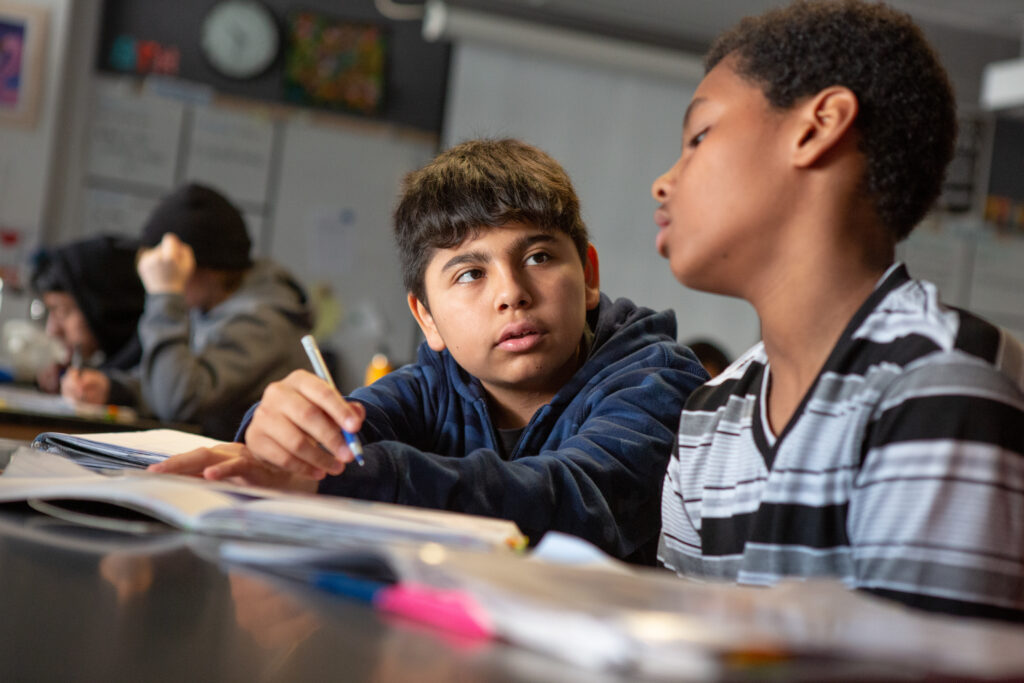


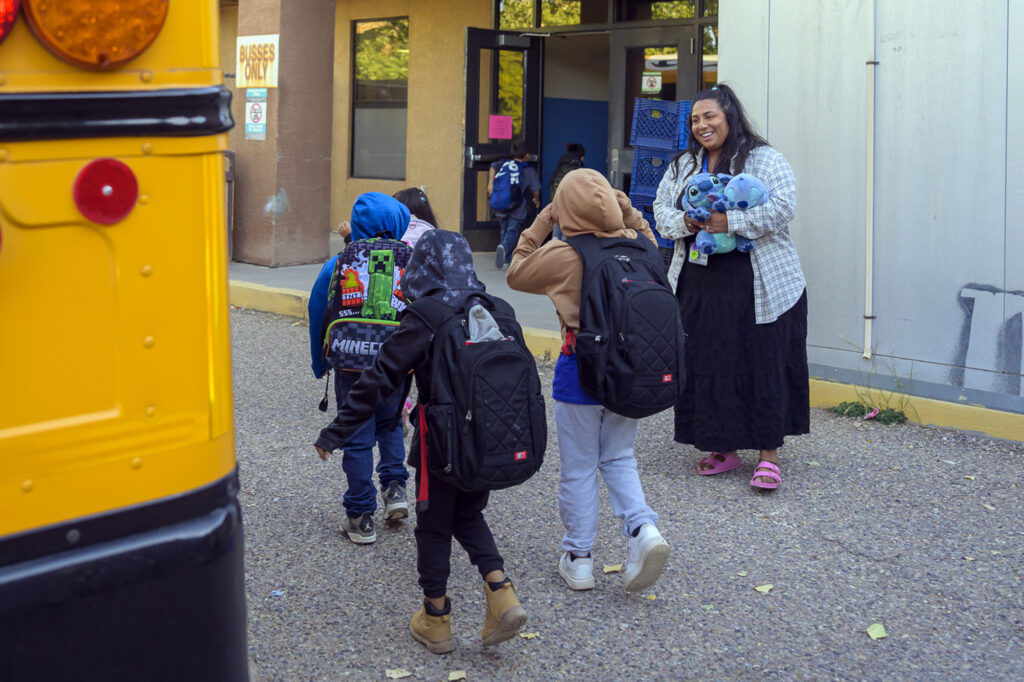










)
)
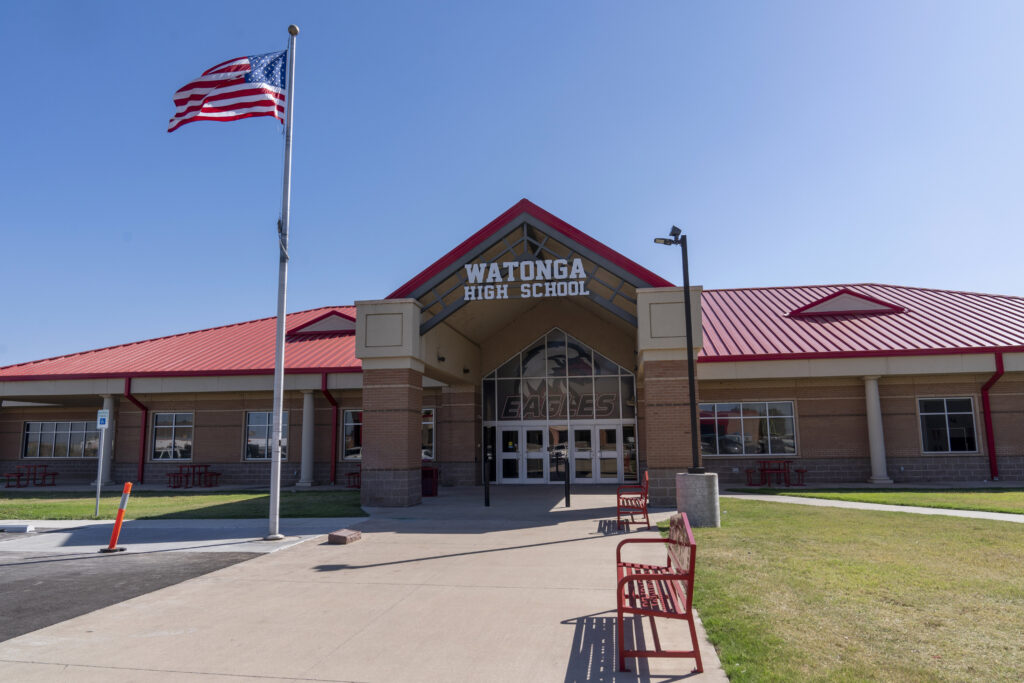




)


